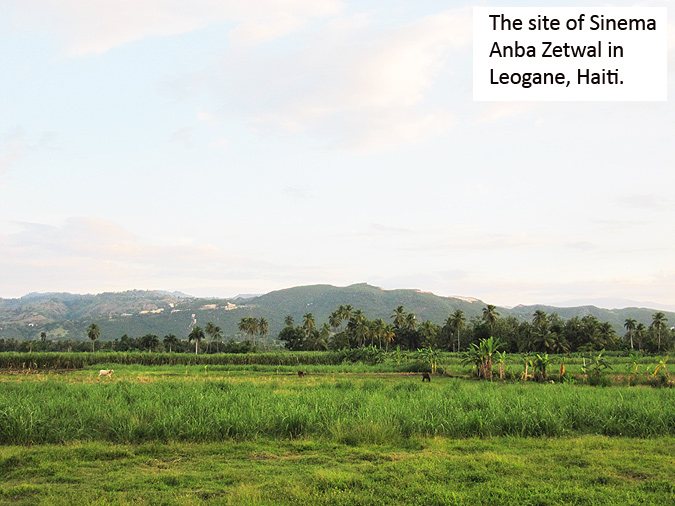BLOG: Thursday Morning, June 17
Leaving Port-au-Prince yesterday around 3PM, our driver Claudie navigates the clogged and craggy streets fluidly, dipping down every small pass and alley. Rubble seemed to be more prominent in the streets than people, until you looked around, over and above the piles to see markets, barbershops, sign painters and school children, all busy at work or play. Life is continuing, but like like no other. It seems there has always been a post earthquake Haiti, or a post "something" Haiti, when looking at the near normalcy. It is a country of adaptability, strength, endurance.
Past Carrefour on the road to Leogane, there is silence in the van as we watch the abandoned beach resorts and "discos" from decades past, all of us thinking of that Caribbean vacation we took once. White sandy beaches and rum drinks on post-colonial sand occupied by the cryptic colonialism of tourism. This sand has a different memory, a different history, in its granules. The feet that dance on this sand are not the sun-burned feet of European office workers celebrating a week away from drudgery. The feet on this sand are strong, rugged, historic. Feet that carried this country to independence yet at times retreat in sheer dependence. They dance two dances, conflicted within themselves. The road is cracked in half, opening slowly day by day since the earthquake. Soon it will be split completely in two, restricting proper travel from the provinces. All the king's horses and all the king's men, don't seem to be putting Leogane together again. There is no more waiting for the "cavalry." Time to get rid of the king! But where is he and WHO is he?
Arriving at the crossroads, the cross of Barom Samdi, we turn right. Down the dirt road into Lakou Model, with its long history of Rara, Alan Lomax wrote of this place in 1937, and his journal has brought some of us here today. And brought all of us together. The camp is almost ready; tents, tents, and more tents. The tent has a new meaning in the Haiti of today. What is for us an adventure is the way of life for most of the country. The word adventure seems hollow reflected in the eyes of the people watching us arrive. The SAZ team has done a great job creating our small community, port-a-potties and a makeshift kitchen, a Delco for power, and a communal table are getting set up. There are about 30 on the team, busy at work setting up a HUGE stage and screen in the middle of a cow field, curious onlookers waving and hiding smiles behind well-worn hands.
As night falls, we find our tents and look for spirits... of all kinds. The liquid and the vapor. They are everywhere. Clarin (Haitian moonshine) and Barbancourt rum are offered to the Loa whose land we are sleeping on... or will try to sleep on! 10PM dinner of chicken and rice leads into storytelling and more spirits, lulling us into the attempt at sleep. Nocturnal sounds of roosters crowing all night, dogs yelping and howling, pigs chewing, and the occasional "My back hurts," "It's soo hot," "What's crawling on my back," "A pig rooting outside my tent. Really?!?" and "Shut up or you're dinner tomorrow" ring through the air. Try to sleep. Try to sleep.
Morning comes at 5AM for some of us, earlier for others. The sheer heat in the tent is unbearable, until you step outside. Back in, back out, back in again. The buzzing begins, and life is reinviting itself all over again. Kiki on the stove, Michou on the microphone, Tatiana and Gage debating and discussing Rara and drum beats. Time to start the day.

Search
Featured
| » | See how the Green Family Foundation NeighborhoodHELP program at FIU changes lives |
| » | Purchase Alan Lomax In Haiti: Recordings For The Library Of Congress, 1936-1937, nominated for two GRAMMY Awards. |
 A Documentary by Kimberly Green
A Documentary by Kimberly Green
| » | View Trailer |
| » | Learn More |
| » | Watch GFF President Kimberly Green's CGI Stories segment about the music of Alan Lomax. |







